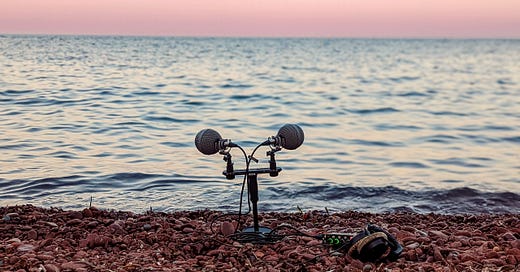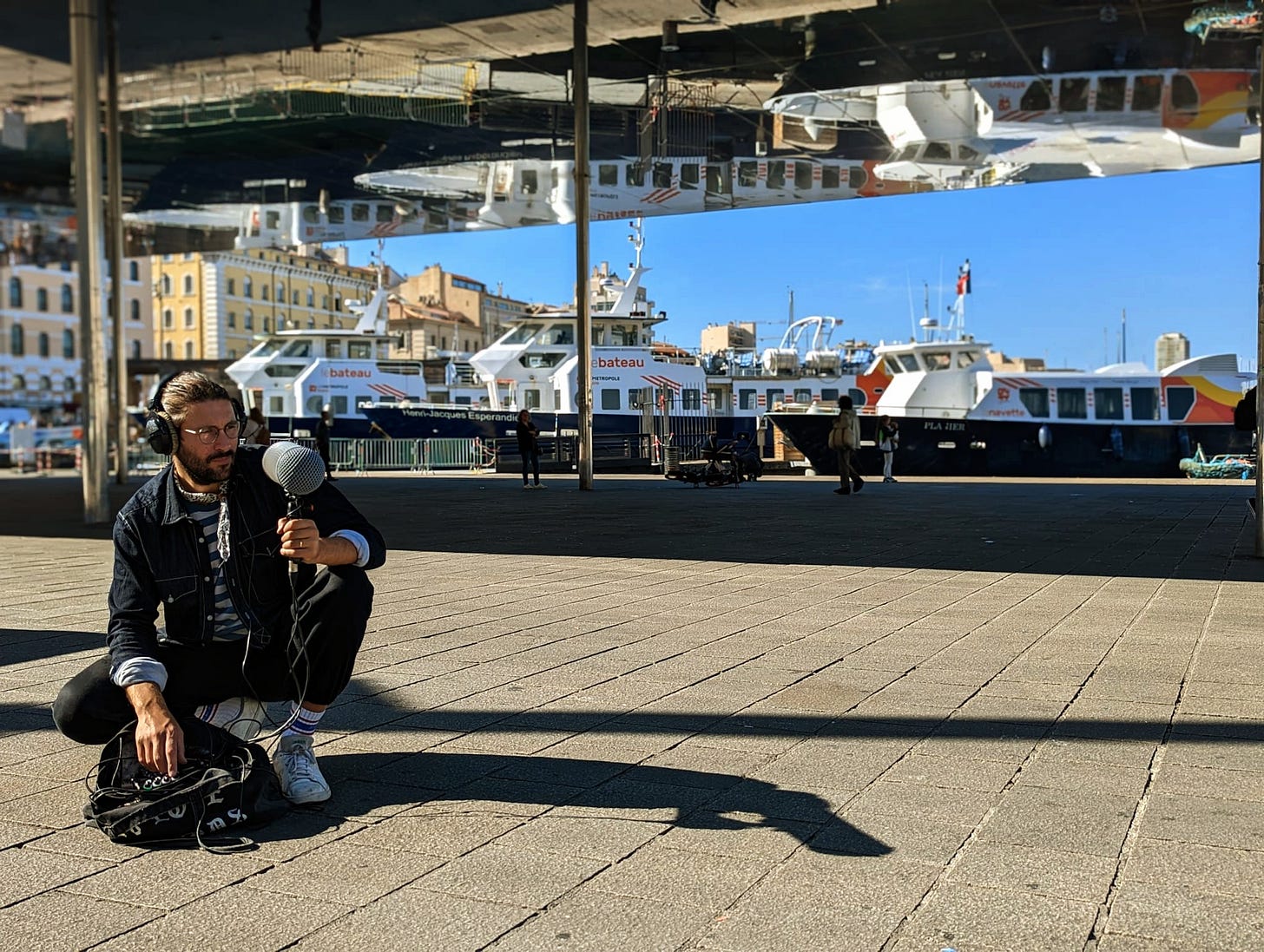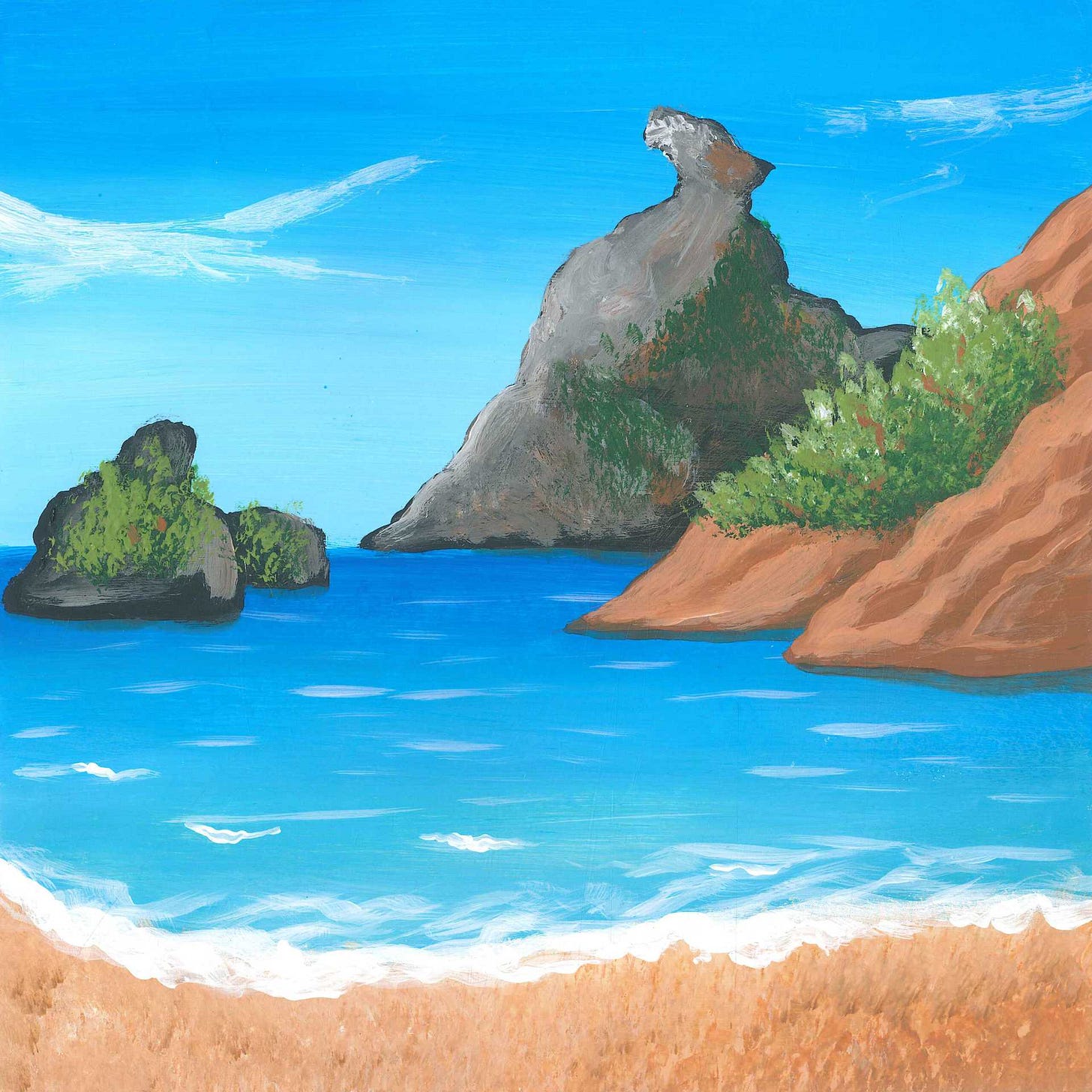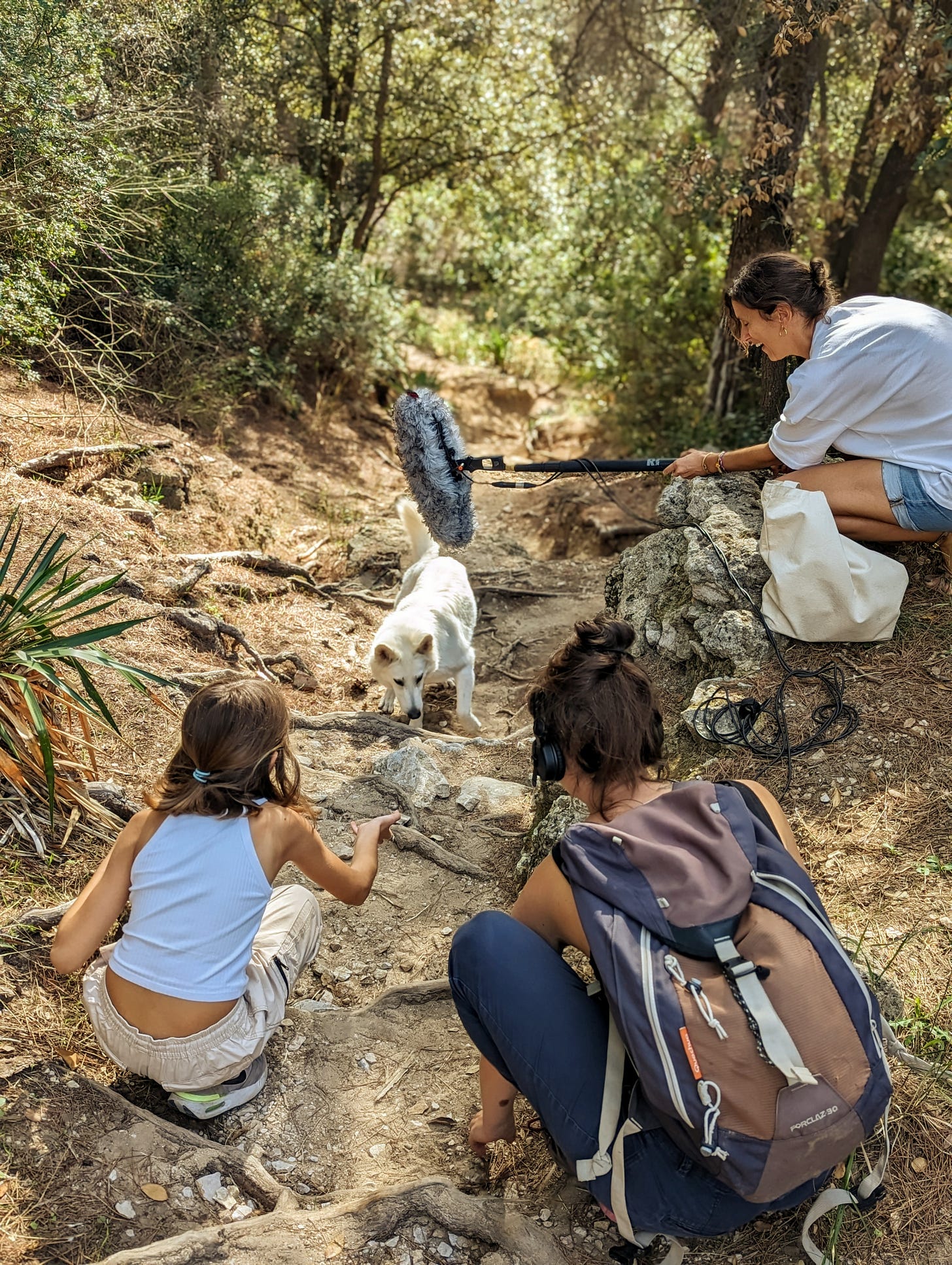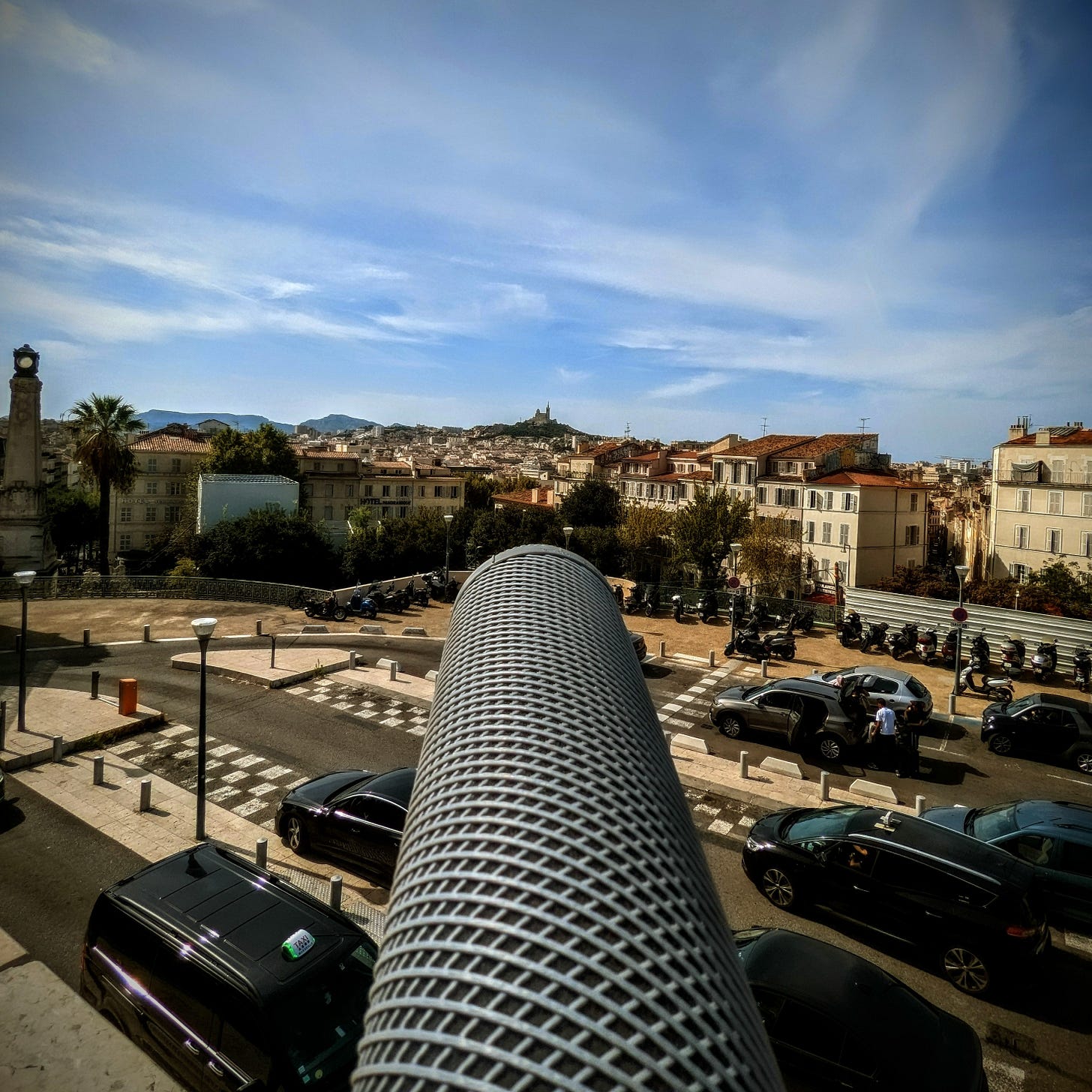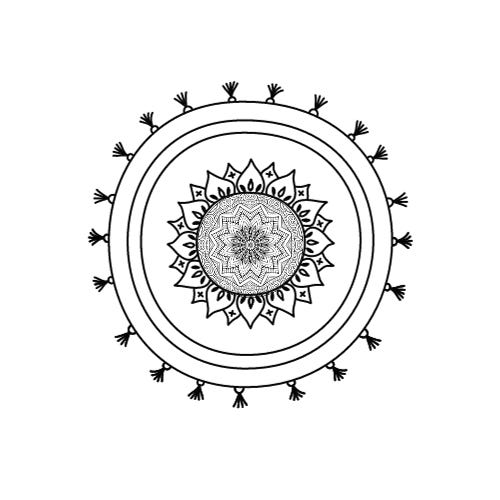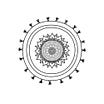Sounds of Marseille
A conversation with Mat from Sonic Tapestries about his AudioSpaces collection in the French port city.
It’s not the first time I’ve said this, but since we set up this Substack at the beginning of last year one of my absolute favourite newsletters to follow has been Sonic Tapestries by the multi-talented artist and field recordist Mat Eric Hart. After a few months of exchanging likes and reposts it was a real pleasure to finally get in touch, and now we’re super excited to have some of Mat’s sounds on the AudioSpaces map.
I won’t give too much away, but this isn’t the last collaboration we have in the pipeline with Mat—so watch this space. For now, though, you can check out the full Marseille collection on AudioSpaces, and if you ever find yourself exploring the city in person then keep your ears peeled for Mat’s recordings scattered across the map.
We got hold of Mat to talk about the collection, as well as his creative work in sound more generally. He also asked us some questions about what we’re up to with AudioSpaces which you can find here on his Substack, so right after this make sure you go have a read of that too. A huge thank you to Mat for such an insightful exchange!
Thanks so much for compiling these wonderful sounds from Marseille, Mat. To begin with, could you tell us a bit about the recordings in the collection? What inspired you to capture these sounds from in and around Marseille? What drew you to these spaces?
My pleasure! It's very exciting to contribute to such a fascinating project. I'm a huge fan of the work you do with AudioSpaces!
I relocated to the South of France in late 2019, at a time that feels very much distant to me now! I live in a small city called Aix-en-Provence, which sits just outside (about 30km north) of Marseille. Thanks to a series of adventures, invitations and curious excursions I began to slowly discover Marseille through friends and acquaintances. I feel that any new place or location we experience for the first time brings about a somewhat enhanced perception, but Marseille is one of those cities that really shows you its true colours straight away – very passionately and effortlessly! For those that know me, they know that my microphones travel with me almost everywhere I go... so I was soon able to build a collection of fascinating sounds drawn from these encounters, mainly from wandering through the streets and districts of the city. Each recording seemed to teach me something new about this city, and the city has stayed very close to my heart since. I try to keep my intention or perspective clear so that I don't seek out specific sounds, preferring to let the city reveal its secrets to me in its own time. This way, I believe this collection of recordings reveals a true snapshot of what life in Marseille is like today.
I’ve never been to the region, but I feel like I know it a bit more now just by listening to your map. There's a whole load of different voices, bleeps, machines and even a mizmar—all of which together construct a really distinct soundscape. Could you tell us a bit about your sonic experience of Marseille and where you live? What does your day-to-day sound like? What kinds of acoustic environments do you most enjoy exploring?
So the recordings which I have shared and uploaded to AudioSpaces span back to as early as 2020, when I was travelling regularly around the region to record crowd ambiences for a sound library I was working on. This collection placed a focus on recording "walla" sounds – the term used to describe indistinct chatter used most commonly for placement in films, documentaries etc – from public spaces such as cafes, bars, brasseries, terraces, squares and markets of which there are so many diverse examples in Marseille. Spending so much time just listening and immersing myself in these environments really struck me and this inspired me to search deeper into understanding the city, its neighbourhoods and its people through sound. I sought out Marseillais people who offered to share their stories and show me their experiences of their city, and so the rabbit hole became deeper and deeper!
Last year I was invited to program a series of field recording workshops in collaboration with Marseille's public libraries in a district which sits to the east on the border of the city limits with the Calanques national park. This region is unbelievably beautiful. A stretch of coast that is home to some of the most beautiful prehistoric caves, coves and bays along the Mediterranean. These workshops really opened my ears to not only the diversity of Marseille's soundscapes but also its environments, and the incredible connection that the city's proud residents have with their city. What inspired me most was exploring the beauty of these locations with those who knew them intimately but hadn't perhaps had any experience of listening to them! I was fascinated how these residents, many of whom had lived here for their whole lives, seemed to discover the city anew through the microphone!
You really have this quite phenomenal energy that exists there – a metropolis built on the coast of the Mediterranean – the soundscapes you experience are wild, raw and dissonant. Like many large cities it has its very tangible issues with congestion and noise pollution, specifically the number of scooters and motorbikes that make up the traffic here. But with the sonic challenges imposed by the anthropocene we must learn to accept this, and learn to listen, appreciate and understand the modern urban soundscape.
That mizmar recording you mention was just such an example of the sporadic beauty that can appear in such sonically saturated spaces. I was walking up the Canebière, one of the busiest central avenues of Marseille, when I was completely absorbed by this distant sound. It came from an abandoned storefront – a busking musician playing this beautiful melody amongst the hustle and bustle of the weekend crowd. No one seemed to take any notice of him, as is sadly often the case with street performers, but I've listened to this recording so many times since. There's just something so very real and powerful about it, completely unique to the time and space in which it was captured and performed. This is the essence of what makes for me a truly good field recording!
In many of the recordings there's a real attention to detail of the sounds of nature, but also the complex sounds of human activity and designs—as well as moments where the two intertwine. We hear wood creaking in the wind at the city's old port, dogs bursting out of water at the call of their owners, fishermen on the Calanque de Samena. This relationship between the human and the non-human is an important theme in much of your work. How did this interest develop?
I've been really fortunate to have spent time in some incredible sonic environments that have really influenced me over the years. Having been born and raised in London, I've been immersed in a melting pot of rich, dynamic soundscapes for much of my lifetime. But it wasn't really until my mid-twenties, after having spent time working primarily as a musician and concentrating on this output as a means of artistic expression that I began to really pay attention to field recording and environmental listening. I think over time I became more and more interested in what the microphone chose to share with me, rather than the inverse – what I chose to share with the microphone! In 2018, I joined the British Library Sound Archive as a volunteer for their large scale archive digitisation project. It was here that I discovered a universe that completely revolutionised my approach to working with sound. I worked on several projects supporting the World & Traditional Music collection – a lot of listening to old tapes of the legendary sound recordist Alan Lomax and his adventures across dust bowl America and in the pubs and folk clubs of Great Britain. I became deeply fascinated by the relationship between space and sound, and how the imperfections didn't seem to matter when placed in a real life setting outside of what we could consider a studio environment.
Just a year later in 2019, with the support of the archive, I traveled to Japan to record my first field project exploring the soundscapes of spiritual spaces in Japan. The Library placed a great deal of faith in me at that time, considering I had no prior field experience! I worked tirelessly to coordinate the project, seeking out individuals, communities, artists and spaces to record during my time there. I learned to appreciate a whole other dimension of sound – the importance of the environment, the space in which a sound is recorded – and how this greatly influences our perceptions when listening. Since then this has been my principal line of research with sound.
I remember an experience which touched me very deeply whilst I was working in Japan. In truth, there were so many of these moments, but I was very fortunate to have been invited by a great Zen priest – Tokuun Tanaka – to visit Dokeiji Temple in Odaka, Minamisoma just on the outskirts of Fukushima. This beautiful region was completely devastated by the great tragedy of the 2011 Daiichi disaster. I spent a few days, much like a fly on the wall, staying in this temple hidden in the hills, watching Tokuun go about his daily rituals and commitments. Just observing and recording. Our conversations were constructed from the very basics of Japanese & English mostly and were for the most part filled with a quiet grace and simplicity that permitted me great space for listening. The subsequent recordings are sparse and simple, but they perfectly capture the atmosphere I experienced. I can listen to those recordings and I'm transported back to the scene – it's perhaps even more powerful than any visual cue could provide. I felt that for the first time I was truly understanding how sound could tell me so much about the person sitting opposite me, and the environment surrounding me. To call it an epiphany perhaps would be the wrong turn of phrase; it's really something of a profound and mysterious nature that I find difficult to try to put into words.
For many of our contributors who are just beginning their journeys as deep(er) listeners and recordists, could you paint us a picture of how you typically carry out your work? Where does the recording process start for you, and what are your usual next steps? (Or, alternatively: where does a project start for you? Where does it “end”?)
Before I talk again about my experiences, I just want to say something directly to those contributors/readers who are at the beginning of their journey, because I can't emphasise enough how important this point is! What is important is to immerse yourself in pressing record, in listening and trying not to get caught up in the quality of your gear, or the mic positioning or whatever. Yes, these things have their place and importance, but further down the path, and for certain situations. This is what makes AudioSpaces such a revolutionary concept for me, because the emphasis is on the interaction with the space rather than the presentation of the sound. I find my work benefits from multiple visits where possible, though of course this is not always possible. For that I try to plan longer recording sessions, I really enjoy visiting a place, recording and then listening back on my ride home on the bus, on the train, in the car... scanning for details and happenings that have been captured. Each listen brings me closer to feeling or understanding a place.
I suppose there is a line that could be drawn to the practices of many analog film photographers. I studied film photography when I was younger and I was always drawn to the work of Ansel Adams who once said: "You don't take a photograph, you make it. Life is your art. An open, aware heart is your camera. A oneness with your world is your film." This idea that the subject doesn't belong to me, that it can't be "taken", really touched me and I feel the same way about recording sounds – concentrate on the moment and the way in which you are interacting with it, rather than what the result will be. Recording is a beautiful practice, and one that requires a great deal of patience. I see each project I work on now very similarly to that of growing a fruit plant. There is the planting of the seed, the period of nurturing, the care and attention, it is this cultivation and care which leads to the harvesting of the fruit. It's a process that takes time, energy and attention. It "ends" hopefully with a tasty fruit!
I couldn’t agree more on your point that it’s the interaction, the process, that matters first and foremost. At the same time, though, another really notable aspect of your collection is the clarity and rich texture of the audio itself. What recording equipment do you generally use, and what role does gear play in your work? At risk of asking too open-ended a question, what ingredients make a “good” recording?
So I've just recently invested in a pair of binaural "Earsight" microphones made by a small French company called Immersive Soundscapes. They are these tiny capsules which fit into your ear like earbuds, but the clarity on them is just insane! I record with them through my Sony PCM D-100 which, as many who have used it know, is a fantastic recorder for its portability, preamps and in-built mics. I have quite a few different pro rigs that I use for various projects. I'm very excited to be receiving a Pearl MSH-10 microphone soon, which is a wonderful compact mid-side mic that I'm looking forward to using in the field. I'm a big fan of using mid-side in my recording practice as I like the flexibility it offers, but I'm also drawn to exploring ways in capturing sonic moments that I find can be difficult when using large and bulky equipment. Expending energy on big set-ups and arrays can take up a lot of your time so I like exploring portable, quick draw rigs that I can record over long periods and listen back through to audition sounds. This way I spend more time experiencing the sound and interacting with it in the space, rather than committing to a spot and hoping for the best.
I'm reminded of this reflection of Thoreau's: "It is something to be able to paint a particular picture, or to carve a statue, and so to make a few objects beautiful; but it is far more glorious to carve and paint the very atmosphere and medium through which we look". I very much enjoy the practice of listening back through environments I have recorded, and whilst I definitely believe that clarity and definition are important considerations, I wouldn't go as far as saying they are necessary to construct a good field recording. This also depends on the context of the placement of the recording. Where is it going to be placed? Is it tied to any other media? What is (if any) the message being communicated in the sounds we are hearing? Spending time in the field, practicing and listening are essential to developing the craft.
Sonic Tapestries is a radio show, too—full of "atmospheres, Nature, humans, spirits & spaces intertwined through hypnotic sounds, transcendental rhythms and oneiric oscillations". You've also released your own music over the years, and even spent time engaging with traditional music in Northern Japan. How does music inform the way you interact with the acoustic world (or perhaps the other way round)?
For me radio provides a great platform for cultivating appreciation of what other artists are doing. I spend a great deal of my time listening to the work of others so much so that I think it's really become an integral part of my creative process. I believe it's important to make space for this in our own creative practice – to focus on purely appreciating the work and not so much on trying to figure out ways to affect your own practice. It's hard to do! I have this huge sign hung above my head in my studio which reads "IT IS BETTER TO LOVE EVERYTHING THAN IT IS TO TRY AND FIGURE IT OUT!"
This was inspired by the teachings of Ram Dass and his "Be Here Now" series of talks drawn from his experiences in the high mountains of India. Without diving too deeply into the metaphysical, this phrase holds great significance for me as it helps me to take notice of when and where I get caught, you know? I think listening has always had this wonderfully calming, clearing effect on my conscience. I spend so much of my time engaged in it. When I look, or listen, too hard I find it hard to receive the pearls of inspiration that drive me forward creatively. Sonic Tapestries has been going for eight years now and it has brought me into contact with some incredible people, artists, labels and sounds that I'm privileged to be connected with. It has offered me a way of experiencing and processing the world around me.
With my own music, I experience periods of inspiration and dedication that come and go – that fluctuate with my productive flow. I think it's certainly one of the more challenging aspects of my practice and I'm certainly still trying to find the remedy to it. I've been thinking about recording a new album of instrumentals up in a mountain refuge near the summit of the Sainte Victoire mountain. I feel a great calling to do so – it's a very magical place, somewhere I'd like to retreat to and compose like I did back in 2020, when the world stood still during the Covid pandemic, but my feet are still very much locked at the gate. I'd certainly like to continue on from where I left off with Spirits & Reflections and work on a sequel!
Equally, you’re very busy at the moment! How might you summarise your current creative practice for our readers? What upcoming projects are you most excited for?
Busy or idle, I feel that whatever I'm doing I'm in a constant struggle to remind myself that time is not a foe, and that I shouldn't be afraid of slowing down or letting time pass slowly. Italians have this wonderful expression "dolce far niente" – the sweetness of doing nothing – to describe the precious time when we are unattached to our schedules and commitments. To embrace disconnection. I acknowledge that this is not always easy, what with our own professional and personal commitments. I have a young family, and realise full well the commitments and constraints that can limit my creative time and energy, but the key to cultivating a healthy practice rests in not dwelling on the times we can't and embracing the times we can.
Recently I have become very immersed in working with Ableton 12, which has sparked a kind of creative renaissance for me after having not really used it for a long stretch of time, since maybe version 7 or 8... The creative possibilities you can achieve with these tools are phenomenal and likely infinite! I'm currently preparing for some very exciting projects. Over the next few weeks I will be leading further recording workshops in Marseille which I'm very excited to be collaborating with AudioSpaces on to produce something very special (keep tuned in for that one).1
I'm also working on a beautiful project exploring the soundscapes of the Mount Ventoux National Park region – an environment well known for its affiliation with the daunting cycling route undertaken by many of the sport's most dedicated pilgrims. I'll be recording a lot of bike sounds to try to create an immersive work that pays homage to this region which involves spending lots of time visiting, exploring and hiking – a part of the project I'm very much looking forward to! Finally, later this year I'll be travelling to Equatorial Guinea to begin work on another field project documenting contemporary and traditional music of Equitoguinean culture. I'm incredibly fortunate to be receiving the support of both the British Library Sound Archive and French Institute of Malabo for this project. Opportunities such as these are what inspire me to keep doing what I do: travelling, exploring, listening and recording.
I'll be sharing a great many of these sounds over the coming weeks and months, so if you are interested in keeping in touch and following me on my travels you can subscribe for free to Sonic Tapestries!
More info on this one soon—it’ll be an early taste of what our new cross-platform capabilities will be able to offer 👀

